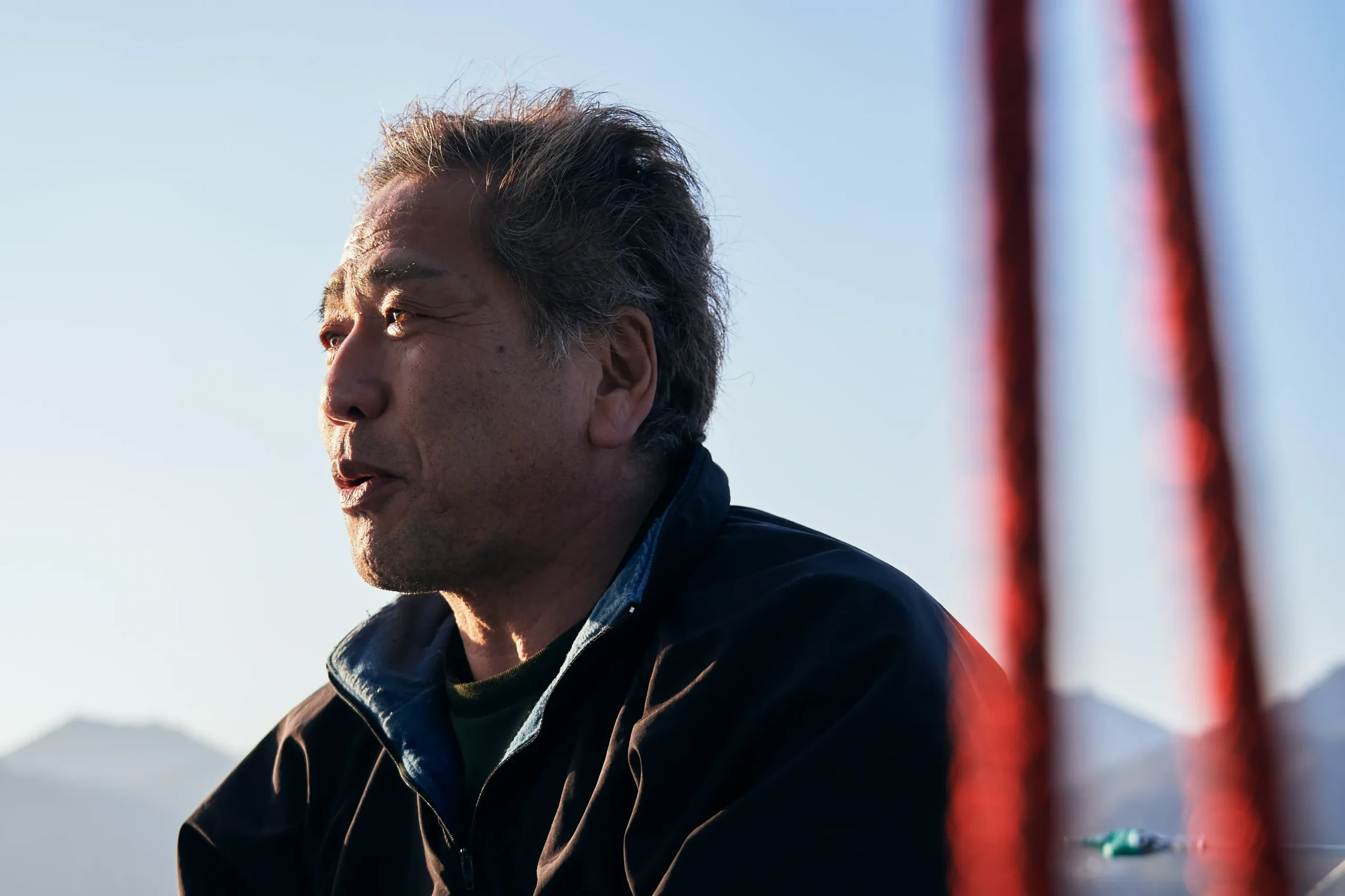
Becoming the “Messenger” Connecting Human Society and Nature: The Passion Within the Yacht Floating on the Seto Inland Sea

山下 健一
Kenichi Yamashita
Miyajima [Hiroshima]
Kenichi Yamashita
Adventurer / Founder of Orihalkon, an Adventure Comprehensive Experience
Born on September 14, 1963, in Fukuoka. Began rock climbing at the age of 13, and at 18, ventured to Yosemite National Park, a climbing mecca in the United States, where he became the first Japanese to solo-climb the northwestern face of Half Dome, then the world's most challenging rock wall according to Guinness World Records. In June 2000, he set out on a circumnavigation of the Pacific Ocean by yacht with his family, returning to Japan in August 2003. He currently resides at the foot of Mt. Mikuradake and provides adventure comprehensive experiences.
Characterized by calm waters and numerous islands, the unique landscape of the Seto Inland Sea is home to someone who offers sailing experiences aboard a yacht. That someone is Kenichi Yamashita. Successfully conquering the Guinness-recorded giant rock walls and embarking on a three-year Pacific Ocean crossing with his family, Yamashita has always confronted nature. Why does he continue sailing in the Seto Inland Sea, and what is he seeking there? Let's find out.
Mt. Mikuradake and the Seto Inland Sea.
The breath of the Earth, as taught by Hiroshima’s nature.
“I’ve been fascinated by sailing since I was a child. I even wrote in my elementary school graduation yearbook, ‘I will cross the Pacific Ocean on a yacht,'” says Kenichi Yamashita. Throughout his growing years, the dream of “circumnavigating the Pacific on a yacht” never left his heart. He had no hesitation in choosing a career path and decided to attend a school with a strong yachting club.
Unfortunately, the high school he had hoped for rejected him. In the midst of this setback, Kenichi’s interest turned from the sea to the mountains.
“I happened to meet world-renowned rock climbers, including the first Japanese person to ascend the massive cliffs of Yosemite National Park in the United States. Under their guidance, I made my debut as a rock climber. And by the time I was 18 years old, I had built up my career by successfully climbing the rock wall, which at the time was the highest in the world by Guinness World Records.”
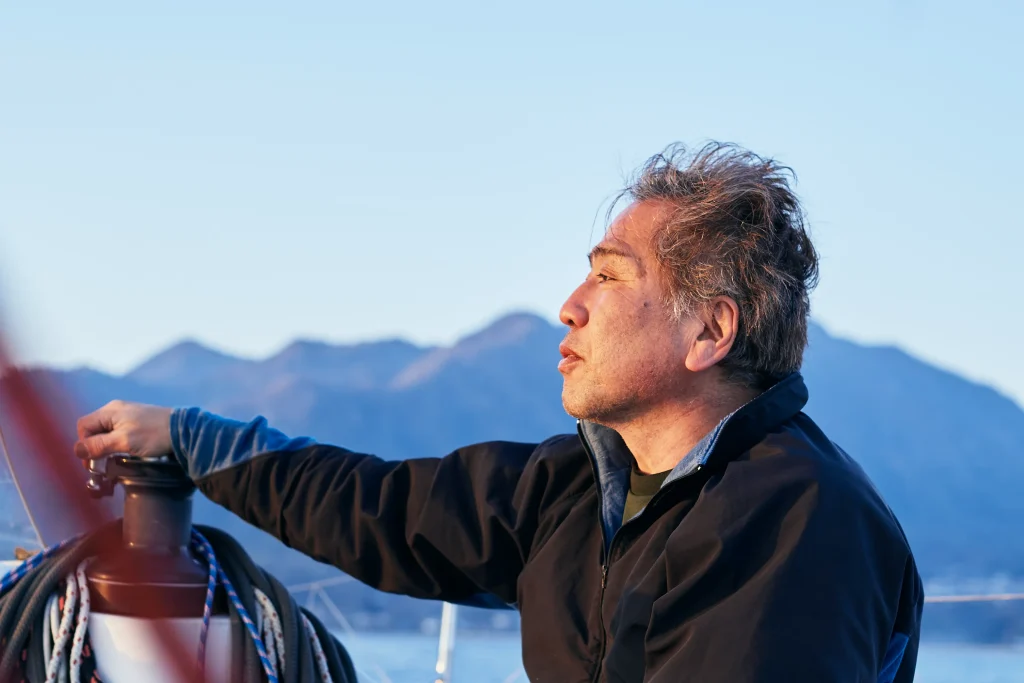
Afterward, Kenichi left his hometown of Fukuoka and moved to Mt. Mikuradake in Otake City, Hiroshima Prefecture, a renowned location for rock climbing in Japan. He worked there for 12 years as a mountain hut caretaker and a rock climbing instructor. During this time, he met a partner, and they had children together.
Amidst these tranquil moments, Kenichi’s childhood dream resurfaced in his mind.
“People often say, ‘Dreams come true if you don’t give up.’ I wondered if that was really true. So, I decided to put it to the test and, after descending from the mountain, I worked hard at various jobs to save money and bought a used yacht.”
The dream he had harbored since childhood, “circumnavigating the Pacific on a yacht,” was finally becoming a reality. However, there was a significant difference from what he had envisioned at that time: he now had a family. Instead of hesitating due to the usual challenges, Kenichi considered it an opportunity to create something meaningful.
“At that time, my children were 5 and 9 years old. Certainly, studying at a desk may be important, and there might be options for attending cram schools in preparation for future entrance exams. However, experiencing the raw beauty of the Earth, seeing it, feeling it, and thinking about it while our senses were still tender, I believed, was an irreplaceable experience. So, I let my children take time off from school to embark on this voyage.”
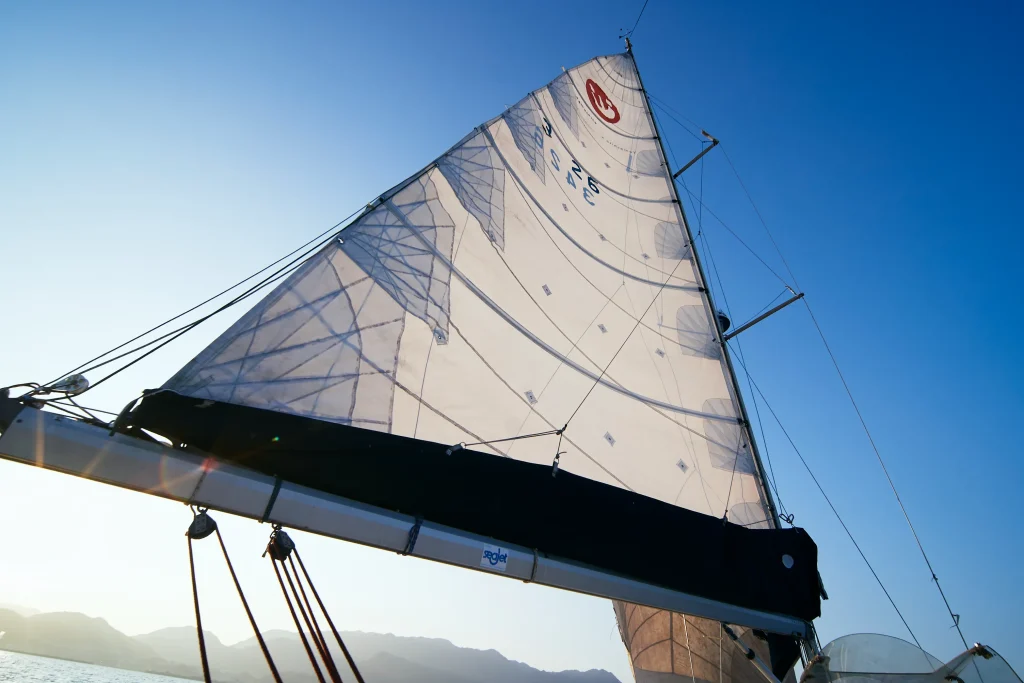
Kenichi describes the destination as “the Earth” itself. Over the course of 3 years and 2 months, the family visited the wilds of Alaska and various natural parks around the world while continuing their adventure.
“Usually, we tend to think that human society, where we live, covers the entire Earth. But beyond that, there is a diverse and rich natural world. I truly felt that. When you are in the wilderness or out at sea where radio signals don’t reach, you can feel the energy and breath of the Earth in your body. Deceptions, excuses, and falsehoods that might work in human society don’t hold in the natural world. It’s all about honesty and being true to yourself. Pursuing that feeling hasn’t changed for me, from the time when I confronted mountains through rock climbing.”
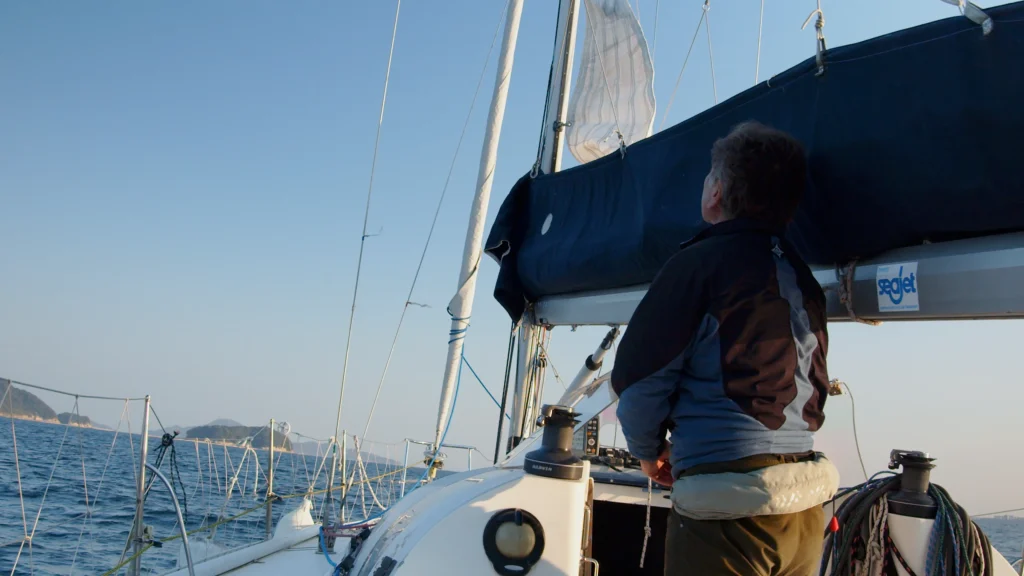
After successfully circumnavigating the Pacific Ocean, Kenichi returned to Hiroshima. With a renewed perspective on nature and society, he felt a deep desire.
“What to do after the voyage? When I thought about it, I wanted to challenge myself as a ‘communication vessel’ that bridges the gap between human society and the natural world.”
And so, Kenichi started a sailing experience project on the yacht “Orichalcum,” which had accompanied him on his Pacific voyage. He provides numerous participants with the opportunity to connect with the natural world.
In the gentle Seto Inland Sea, a Bridge between human society and the natural world can be built
Currently, Mr. Yamashita is sailing in the Seto Inland Sea. Having seen the vastness of the Pacific Ocean, what does this sea mean to him?
“In terms of clarity, there may be clearer seas around the world. However, the Seto Inland Sea offers a unique landscape with calm, waveless expanses of water and numerous islands. There are scenes here that you won’t find anywhere else.”
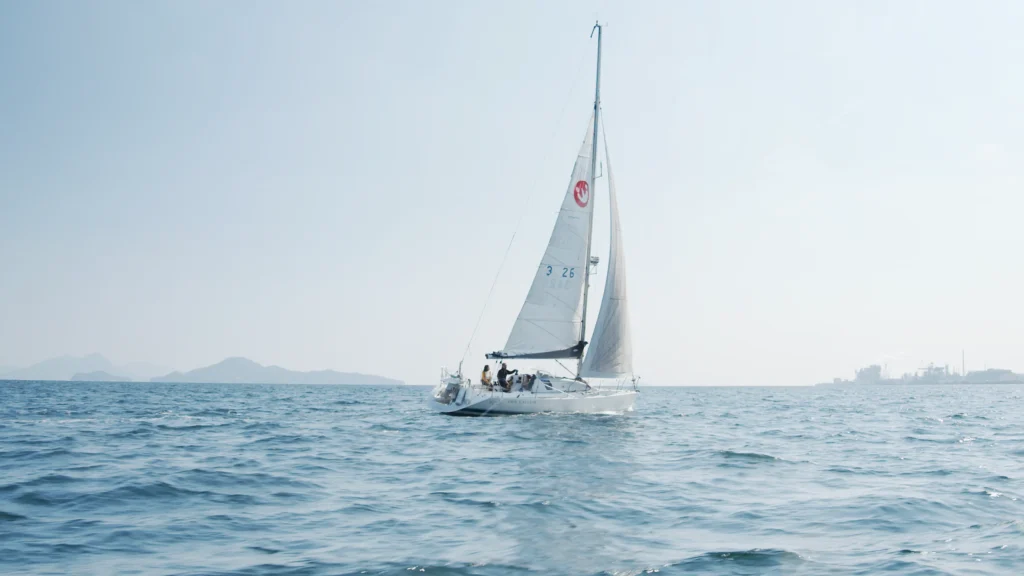
And these conditions, he believes, are quite favorable for yachting.
“The calmness of the Seto Inland Sea, with smaller waves compared to other regions, makes it easier for beginners to take up sailing. That’s why it’s ideal for providing opportunities for the general public to experience yachting. By doing so, I can play the role of a ‘communication vessel’ that bridges the gap between human society and the natural world.”
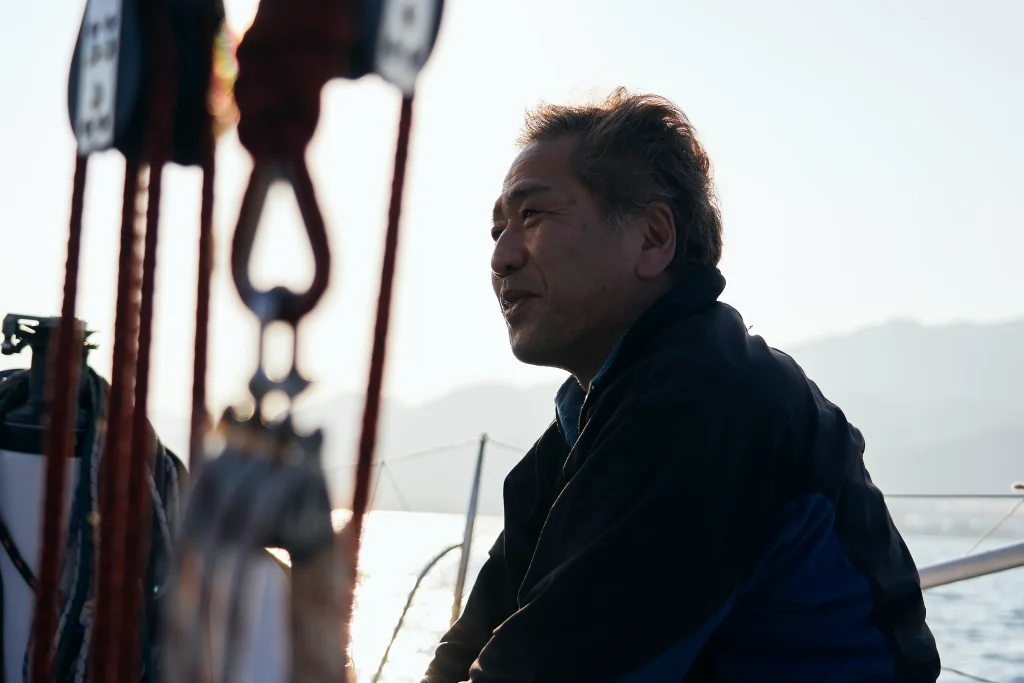
“Yachts are also excellent vehicles for learning about the natural world,” he continues. “That’s because you have to feel, anticipate, and respond to the natural elements like wind and waves to operate the yacht successfully. Ignoring natural phenomena or sailing on stormy days can lead to serious consequences, even risking lives. Yachting is all about not going against nature but moving in harmony with it. If you can sync with the natural world, you can even cross the Pacific Ocean. It’s filled with such romance.”
Despite the Seto Inland Sea being relatively calm, Mr. Yamashita emphasizes, “The sea itself is inherently dangerous.” Taking on that danger and finding ways to make it a safe environment is where respect is born, he explains.
“Some participants in the sailing program initially come on board simply because they want to experience something unusual. They start off excited but gradually become more concerned about each other’s safety. We’ve received feedback like, ‘I’ve developed an interest in nature’ and ‘I feel like my perspective on nature has expanded.'”
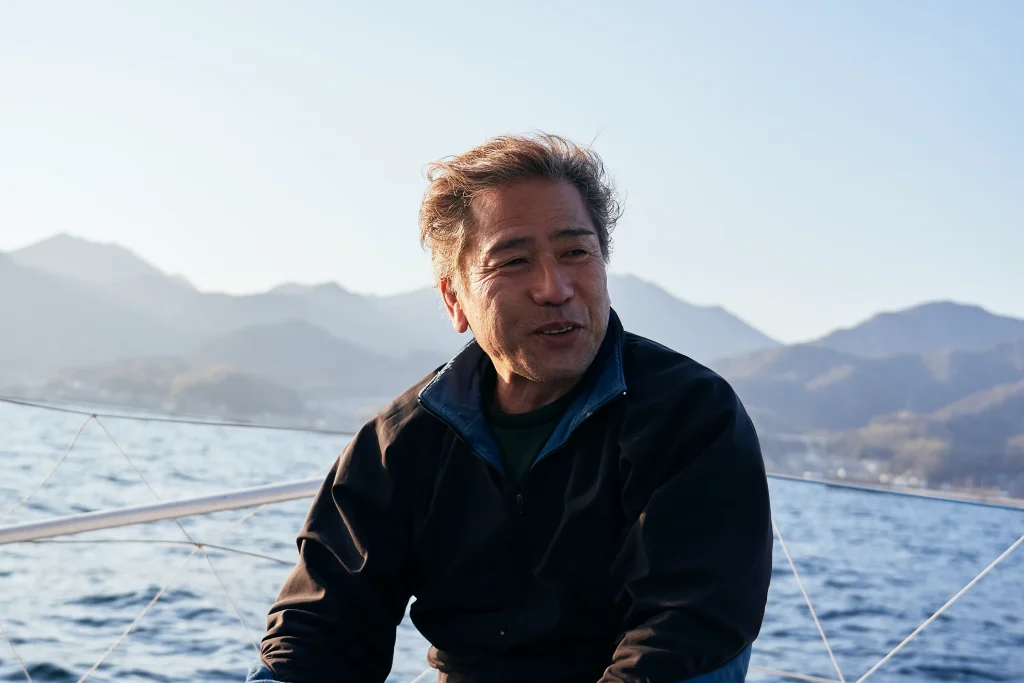
By connecting with nature,
You can develop the ability to perceive actively
Mr. Yamashita, who has ventured into dangerous situations on steep cliffs and vast oceans, offers a sailing experience that differs from the typical guided tours by outdoor enthusiasts.
“Participants sail on an actual yacht that crossed the Pacific Ocean. And the guide is someone who has actually crossed the Pacific. By participating in the sailing, I hope they can get a glimpse of what the voyage was like and feel a part of that landscape.”
Additionally, what sets Mr. Yamashita’s sailing apart is the regional experience.
“Otake City in Hiroshima Prefecture is a place where nature and industry coexist. The view of the moon rising from behind the primeval forests of Miyajima Island alongside the night lights of industrial complexes is something unique to this area. Also, there are many uninhabited islands in the Seto Inland Sea. It’s not uncommon for us to dock the yacht there and spend the night. During those times, I sometimes dive into the sea with a spear to catch fish and serve it to the participants.”
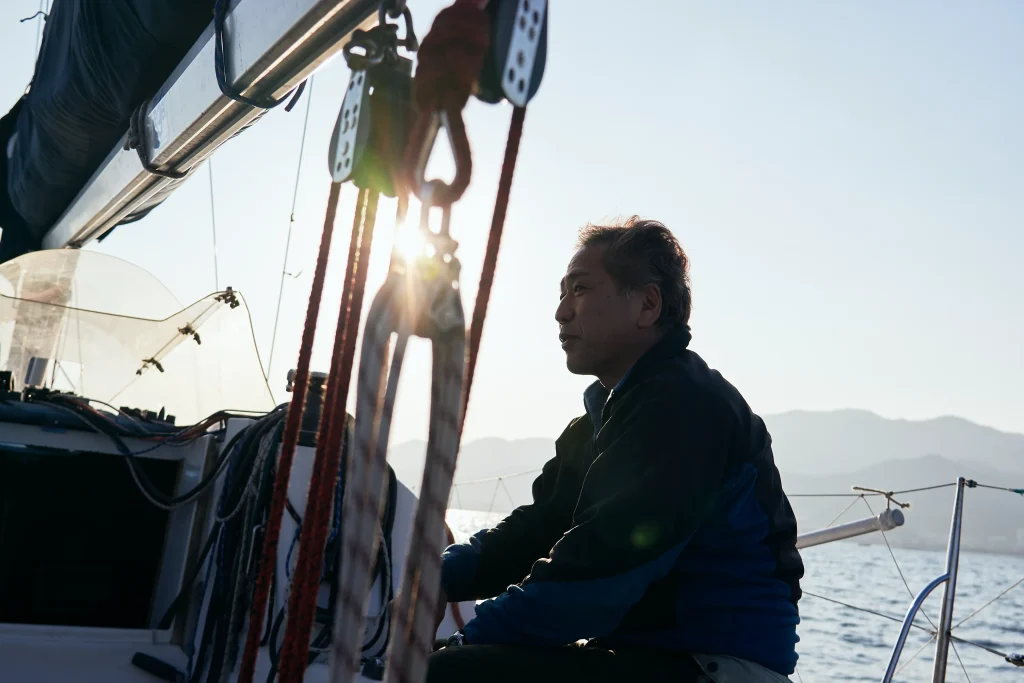
Finally, I asked Mr. Yamashita about what he aims to achieve in the future.
“I don’t talk much about things like ‘This is how nature is’ or ‘Don’t underestimate nature.’ Nature is not something you can understand just by listening; it’s something you must actively experience. However, I believe that having the ability to perceive actively is essential in human society as well. When someone is in trouble or struggling, it would be wonderful if others could sense it and reach out. Creating such opportunities for people to face the external world with heightened sensitivity is what I hope to accomplish.”
